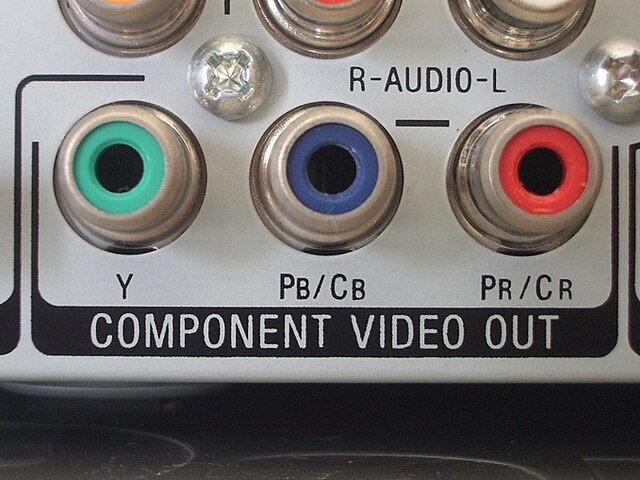SCART is a French-originated standard and associated 21-pin connector for connecting audio-visual (AV) equipment. The name SCART comes from Syndicat des Constructeurs d'Appareils Radiorécepteurs et Téléviseurs, "Radio and Television Receiver Manufacturers' Association", the French organisation that created the connector in the mid-1970s. The related European standard EN 50049 has then been refined and published in 1978 by CENELEC, calling it péritelevision, but it is commonly called by the abbreviation péritel in French.
A male SCART connector (21-pin)
Typical SCART sockets on a set-top box
RGB-capable SCART (gold plated)
Non-RGB SCART male connector. Only 10 pins (2, 6, 7, 8, 11, 15, 16, 17, 18, 20) are available. Some cheap cables or devices (DVD players, TVs) have a 21-pin SCART connector or socket that actually have 10 wires connected and are thus not RGB / S-Video capable, but only CVBS.
Component video is an analog video signal that has been split into two or more component channels. In popular use, it refers to a type of component analog video (CAV) information that is transmitted or stored as three separate signals. Component video can be contrasted with composite video in which all the video information is combined into a single signal that is used in analog television. Like composite, component cables do not carry audio and are often paired with audio cables.
Three cables, each with RCA plugs at both ends, are often used to carry YPbPr analog component video.
A 15-pin VGA connector for a personal computer
A 21-pin SCART or JP21 connector for a television
YPBPR component video out on a consumer electronics device, a Sony DVD player.







